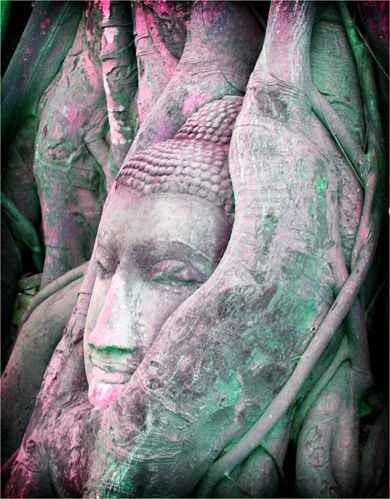


i am a work in progress. whatever i am thinking right now, that is who i am. therefore i will never be the same each time. not that i'm telling you everything.

Eh. I had thought the original image was colorful enough. But now it looks washed-out in comparison to the lomofied version. Here is another one I did. Pretty cool, I think. But that's me. Feel free to be horrified.

Shades of Enlightenment
If you believe you are enlightened, you are actually a little bit crazy.
-- Taisen Deshimaru
Buddha in a Bodhi Tree # 1
Wat Mahathat, Ayutthaya 2/10/07
One of the most photographed images in all of Ayutthaya, Thailand's old capital, is this Buddha head that seems to have grown among the roots of a bodhi tree within the compound of Wat Mahathat built in 1374.
While many Buddha heads were forcibly taken when the Burmese ransacked the city in 1767, this particular head must have remained hidden under brush and leaves for many years, until the Bodhi tree sprang to life and embraced it. The Bodhi is especially significant because it is the tree under which the Gautama Buddha gained enlightenment.